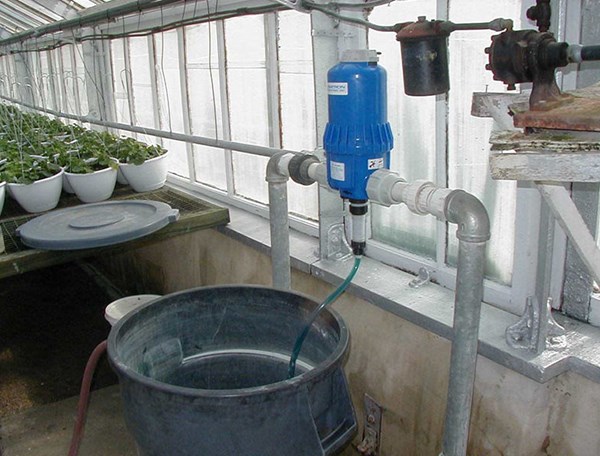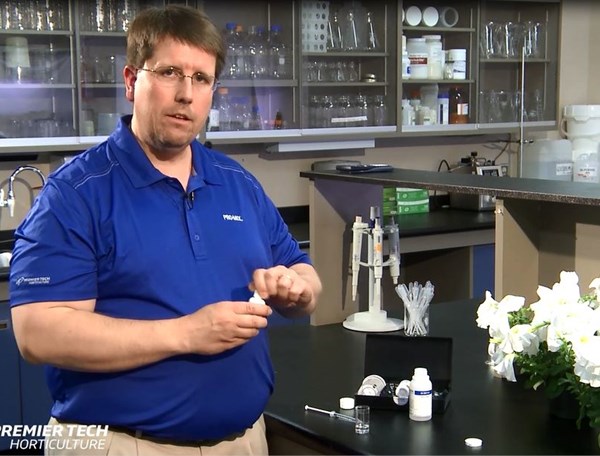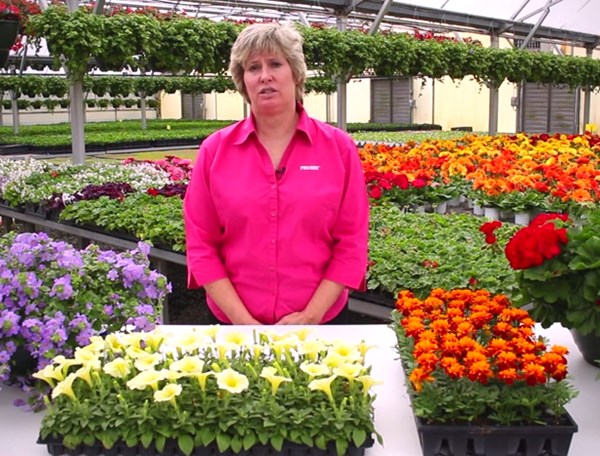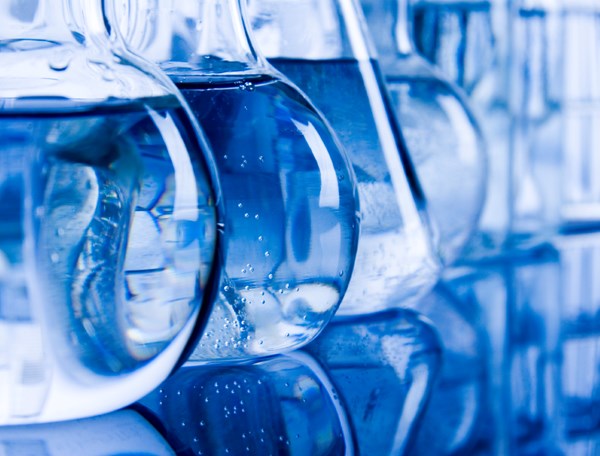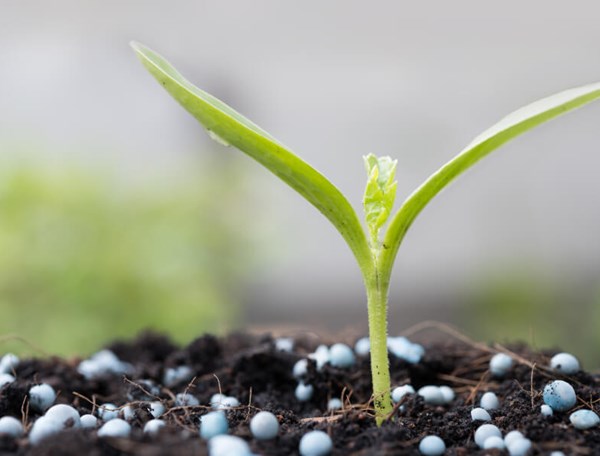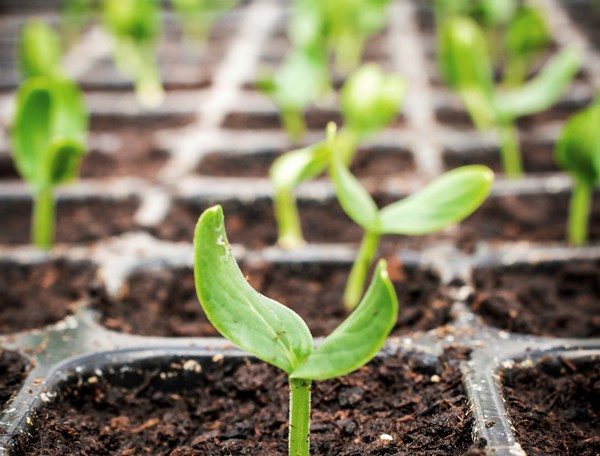Training Center
Matching Water Soluble Fertilizer to Water Quality
Thursday, September 7, 2023 | Troy Buechel
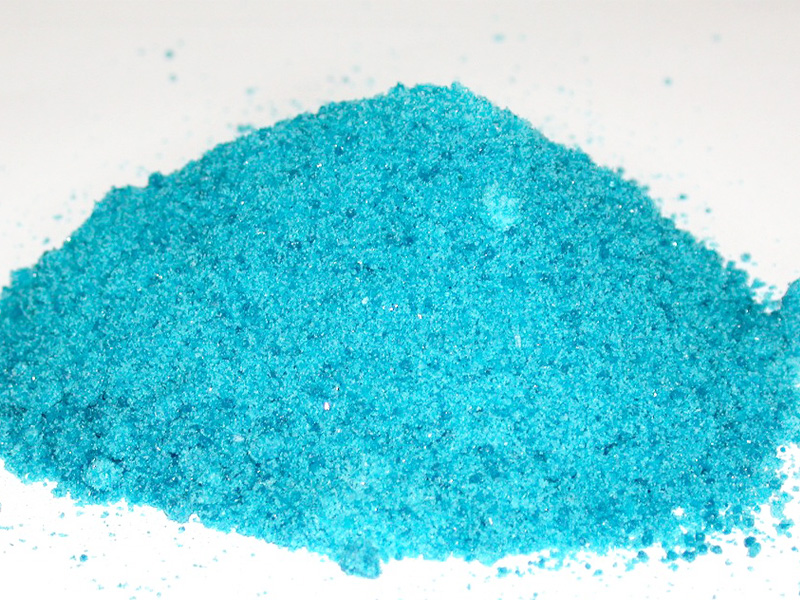
Purchasing water-soluble fertilizer for your crops is not simply based on what is on sale or a matter of selecting a “geranium fertilizer” for your geraniums; it is based mostly on the quality of your water source. Water can have a significant impact on the pH of the growing medium and may also provide sufficient levels of certain beneficial nutrients, keeping them off your fertilizer program. To develop a fertilizer program, have the water tested for alkalinity, nutrient levels and electrical conductivity (EC) for the content of total salts.
What is Alkalinity?
To develop a fertilizer program, begin with testing the alkalinity of your water. Alkalinity is not a measure of pH, but a measure of the bicarbonates and carbonates present in the water and is expressed in parts per million (ppm) calcium carbonate. Essentially, alkalinity is a measure of the quantity of “limestone” dissolved in the water. Therefore, the higher the alkalinity of a water source, the more “limestone” is applied with each irrigation and the faster the pH of the growing medium rises.
This rise can be offset by using a potentially acidic fertilizer and/or injection of acid to neutralize some of the alkalinity into a desirable range. Likewise, if the alkalinity is low, then use a fertilizer with a low potential acidity or even a fertilizer with a potential basicity.
The table below provides suggestions to help in selecting a fertilizer based on water alkalinity:
| Water alkalinity (ppm CaCO3) | Potential basicity of fertilizer (lb CaCO3 / ton fertilizer)* | Potential acidity of fertilizer (lb CaCO3 / ton fertilizer) | Acid injection needed |
| 0-60 | 0-200 | - | No |
| 60-120 | - | 0-200 | No |
| 120-180 | - | 300-400 | No |
| 180-250 | - | 400-600 | Maybe |
| 250+ | - | Adjust alkalinity with acid to range first column. Apply suggested fertilizer. | Yes |
These ranges are only guidelines and assume fertilizer is applied as a constant feed, at normal rates. This information does not apply to young plant production. Guidelines will vary depending on the crop, stage of development, fertilizer rate, application frequency and irrigation schedule.
Which Nutrients do Plants Get From Water?
Next, look at beneficial elements coming from the water. Most water-soluble fertilizers provide nitrogen, phosphorus, potassium and micronutrients, but many do not provide significant levels of calcium, magnesium or sulfate. These three nutrients can come from the water and are needed continuously by plants at the following levels:
| Nutrient | Normal range for plants |
| Calcium | 40-120 ppm |
| Magnesium | 25-50 ppm |
| Sulfate | 60-200 ppm |
If any of these three nutrients in the fertilizer solution are found at levels below these normal ranges, then they need to be provided. Below is a guideline that suggests corrective measures if one or more of these nutrients are at insufficient levels in your fertilizer program:
| Nutrient in fertilizer program | What to do if nutrient is low in fertilizer program | ||
| Calcium | Magnesium | Sulfate | |
| Low | Sufficient | Sufficient | Rotate high-percent calcium fertilizer (e.g. 15-0-15) with standard potentially acidic fertilizer |
| Low | Low | Sufficient | Use / Rotate Cal-mag fertilizer (e.g. 13-2-13) OR Rotate high-percent calcium fertilizer with high magnesium feed (e.g. 18-2-18 or 18-8-17) |
| Low | Low | Low | Rotate high calcium fertilizer (e.g. 15-0-15) with standard potentially acidic fertilizer plus Epson salts* OR use Cal-mag fertilizer (e.g. 13-2-13) AND inject sulfuric acid ** |
| Low | Sufficient | Low | Rotate high calcium fertilizer (e.g. 15-0-15) with standard potentially acidic fertilizer plus Epson salts* |
| Sufficient | Low | Sufficient | Use high magnesium feed (e.g. 18-2-18 or 18-8-17) OR add Epson salts* to fertilizer |
| Sufficient | Low | Low | Add Epsom salts* to fertilizer |
| Sufficient | Sufficient | Low | Inject sulfuric acid** OR add Epsom salts* to fertilizer |
*Epsom salts (magnesium sulfate) cannot be mixed with a calcium-containing fertilizer in the same stock tank.
**Sulfuric acid is only needed if water alkalinity is high.
If a Cal-mag fertilizer or high-percent calcium fertilizer is used, remember that they are potentially basic and will cause growing medium pH to rise over time. If the water alkalinity is above 60 ppm, rotate every other feed with a potentially acidic fertilizer to offset potential rise in growing medium pH. Below are guidelines to help determine the potential acidity of a fertilizer needed when a potentially basic fertilizer must be used:
| Water alkalinity (ppm CaCO3) | Potential basicity of fertilizer (lb CaCO3/ ton fertilizer)* |
Potential acidity of rotated fertilizer (lb CaCO3 / ton fertilizer) |
| 0-60 | 100-400 | 100-300 |
| 60-120 | 100-400 | 300-500 |
| 120-180 | 100-400 | 400-700 |
| 180-250 | 100-400 | 600+ OR inject acid to range in first column |
| 250+ | 100-400 | Adjust alkalinity with acid to range in first column. Apply suggested fertilizer. |
These ranges are only guidelines and assume fertilizer is applied as a constant feed, at normal rates and both fertilizers are used every other time. These suggestions do not apply to young plant production. Guidelines will vary depending on the crop, stage of development, fertilizer rate, application frequency and irrigation schedule.
Soluble Salts in Irrigation Water
Finally, let's look at the total amount of soluble salts that are coming from the water. Most water sources have manageable levels of total salts, but if the E.C. of the water exceeds 0.80 mmhos/cm, then soluble salts can accumulate in the growing medium and cause problems.
Frequent leaching reduces salt build up and fertilizing at the lower end of recommended rates also reduces salt inputs into the growing medium. If the EC of the water exceeds 2.0, then the water may be unusable for crop growth unless it is blended with rain water, filtered using reverse osmosis, etc.
The composition of the soluble salts is also important. If the high salts are coming mostly from calcium, magnesium and sulfate, then plants can tolerate higher levels of these elements as they are nutritive elements and plants will use them. However, if the soluble salts are mostly sodium and chloride, the water can be more problematic for crop growth.
For example, if the sodium levels exceed 80 ppm and chloride 100 ppm, then crop growth can be negatively impacted as plants will take these elements up as opposed to supplied fertilizer. If these rates exceed 150 and 200 ppm, respectively, then reverse osmosis or other water treatment options may be needed.
For more information on designing a fertility program that works with your water and crops, please feel free to contact your Premier Tech Grower Services Representative:
 |
 |
 |
 |
|---|---|---|---|
|
Ed Bloodnick |
Nathan Wallace-Springer |
Lance Lawson |
Victor Brantly |
 |
 |
 |
|
|
Troy Buechel |
Susan Parent |
Jose Chen Lopez |
PRO-MIX® is a registered trademark of PREMIER HORTICULTURE Ltd.
Related Articles
-
How to Calibrate Fertilizer Injectors
Plants require essential elements to maximize their genetic potential. These elements are supplied by air, water, substrates and fertilizers; for water soluble fertilizers, it is important to make sure your fertilizer injector is working properly and that it is calibrated for accuracy.
-
How to Test Water pH and Alkalinity
Horticulture Specialist from our Grower Services team, Troy Buechel, explains how to test water pH and alkalinity for better results!
-
Influence of Fertilizer on Growing Media
Horticulture Specialist from our Grower Services team, JoAnn Peery, explains the 2 main factors to determine the fertilizer you should use depending on your water quality and the kind of crops you are growing.
-
Now Is the Time to Test Your Water
Irrigation in greenhouses can be a major challenge for some managers because water supply and water quality can considerably affect the success of the crop.
-
Pros and Cons of Using Controlled-Release Fertilizers in the Greenhouse
The focus for this article is to discuss the pros and cons of using a controlled-release fertilizer compared to traditional water soluble fertilizers.
-
Stabilize a Growing Medium's pH with Water and Fertilizer
For growers, it is important to closely monitor pH to avoid swings in a growing medium's pH, which can lead to potential nutrient deficiencies or toxicities. Discover how you can stabilize a growing medium's pH with water and fertilizer.

 Where to find our products
Where to find our products
